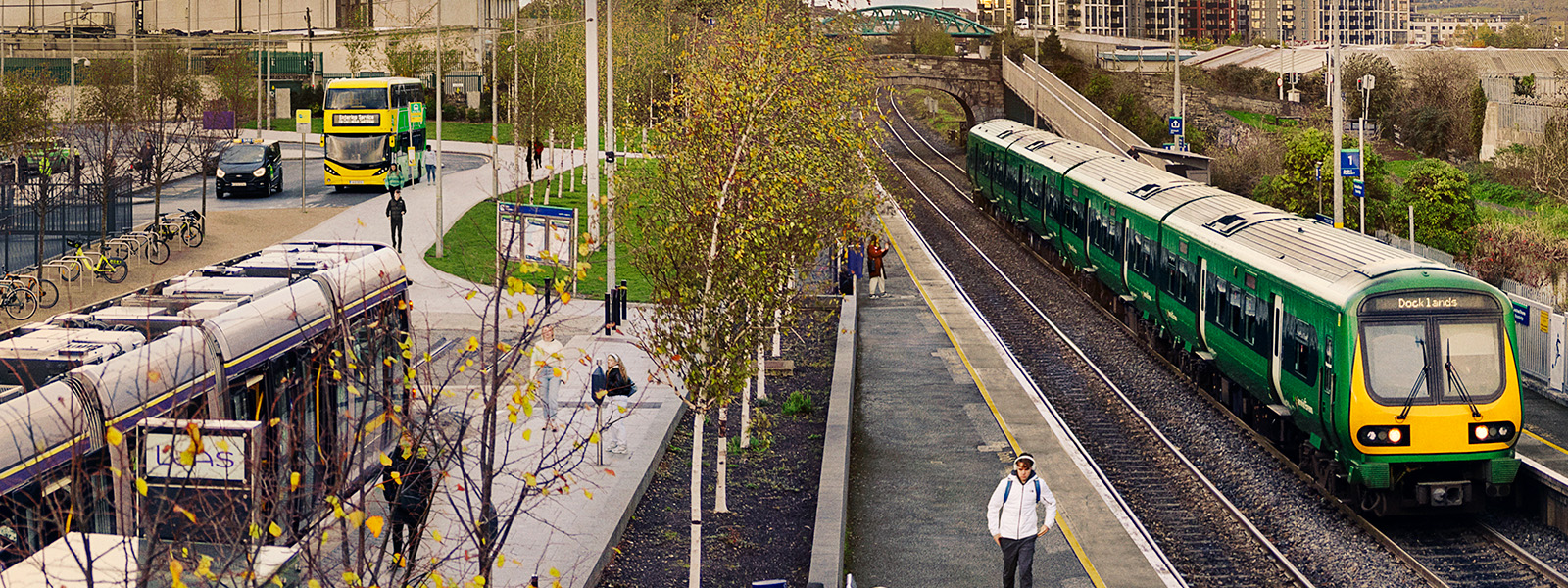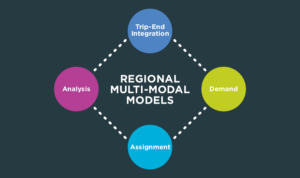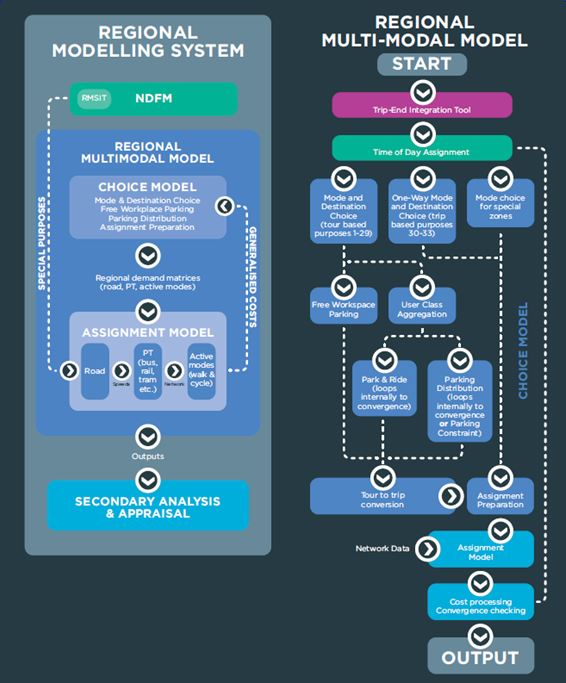There are 5 Regional Multi-modal Models (RMM) in the Regional Modelling System. They convert the 24 hour demand produced by the NDFM into time, mode and destination specific matrices for assignment.
In addition to the typical trip making behaviours of time, destination and mode choice represented in a classic four stage model the RMM includes a detailed representation of the impact of destination parking availability and cost on these choices, as well as the impact of tours in understand the true costs experienced in decision making.
The RMM has four main components. Two of these run iteratively until an equilibrium between travel demand and the cost of travel is achieved.
Trip End Integration
The Trip End Integration stage then takes outputs from the NDFM and converts them into 24 hour trip ends, and into the appropriate zone system and time period disaggregation for use in the FDM.
Full Demand Model
The Full Demand Model (FDM) processes all-day travel demand produced by the Trip End Integration Stage and outputs origin-destination travel matrices by mode for each time period.
Assignment Modules
The Road, Public Transport (PT) and Active Mode Assignment Models assignment modules receive the trip matrices produced by the FDM, and assign them in their respective transport networks to determine route choice and the generalised cost for all origin and destination pair.
The Road Model assigns FDM outputs (passenger cars) to the road network and includes capacity constraint, traffic signal delay and the impact of congestion.
The Public Transport and Active Modes Models assign FDM outputs (person trips) to the PT, walk and cycle networks. The PT Model also considers the impact of capacity restraint, such as crowding on PT vehicles and on people’s perceived cost of travel.
Secondary Analysis
The Secondary Analysis Module (SAM) contains a suite of applications and tools that can be used to summarise results from any one of the five RMM within the RMS.


